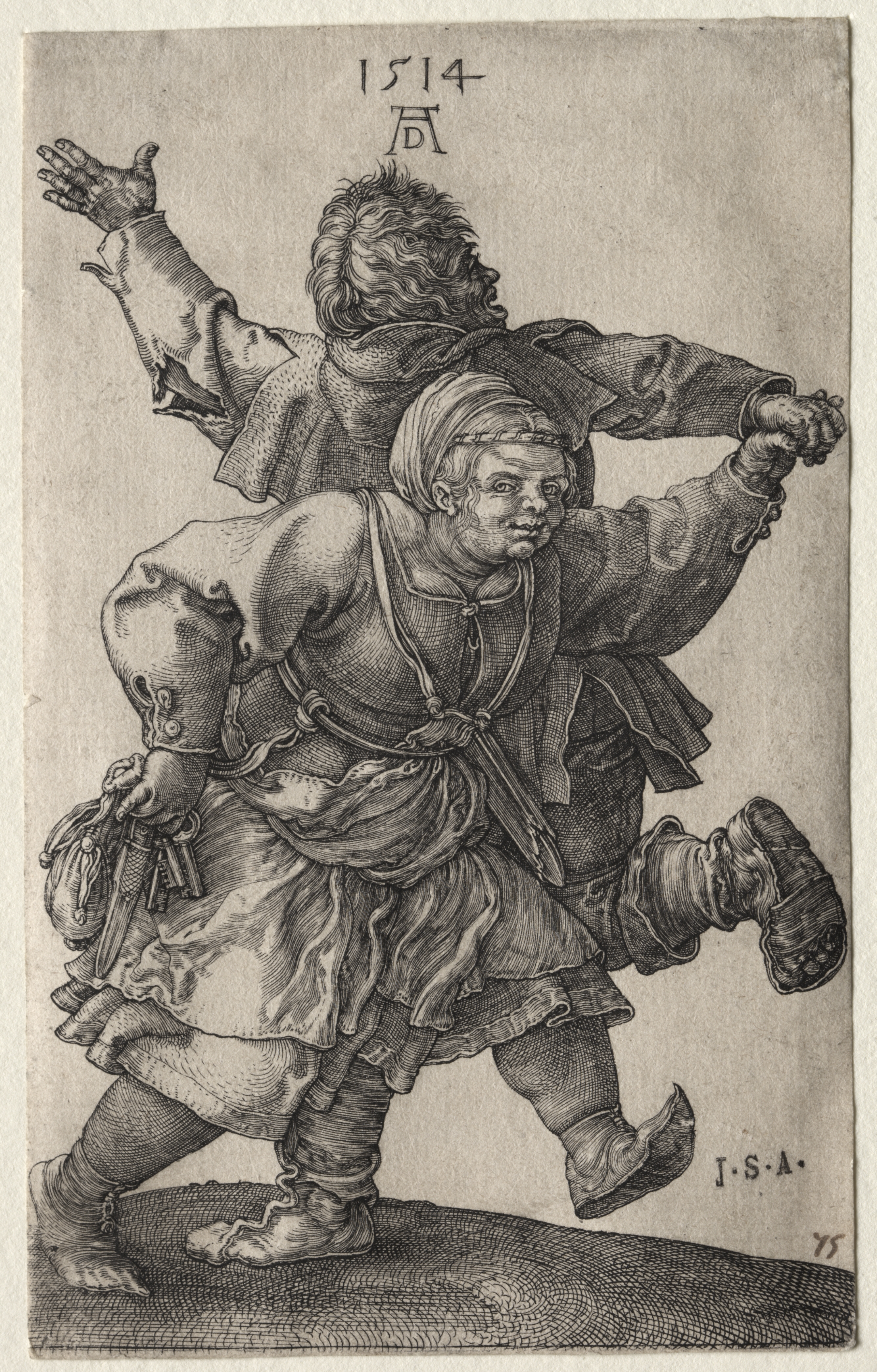The Cleveland Museum of Art
Collection Online as of April 26, 2024

Peasant Couple Dancing
1514
(German, 1471–1528)
Sheet: 11.8 x 7.3 cm (4 5/8 x 2 7/8 in.)
Catalogue raisonné: Meder 88
Location: not on view
Description
Since the 1400s, scenes of country peasants celebrating and dancing were common in northern art; such images often pictured the rural classes as rowdy, uncivilized, and prone to indulgence. In contrast, Dürer presented the country folk displayed here as monumental figures in extraordinary detail, thus elevating the subject. Dürer’s depictions are commentaries on social order and demonstrate his interests in humanity as well as the study of human proportion. Even though the role of gender in Dürer’s peasant scenes is scarcely discussed, he clearly locates the woman as the focal point of this engraving. As her companion hollers and waves his arm in reckless abandon, the stout woman appears deliberate in her movements. She gazes assertively at the viewer while drawing attention to the keys, purse, and knife at her waist—symbols of authority and power.- "1993 Annual Report." The Bulletin of the Cleveland Museum of Art 81, no. 6 (1994): 143-218. Reproduced: p. 166 www.jstor.org
- Dürer’s Women: Images of Devotion and Desire. The Cleveland Museum of Art, Cleveland, OH (organizer) (June 22-September 28, 2014).
- {{cite web|title=Peasant Couple Dancing|url=false|author=Albrecht Dürer|year=1514|access-date=26 April 2024|publisher=Cleveland Museum of Art}}
Source URL:
https://www.clevelandart.org/art/1993.190